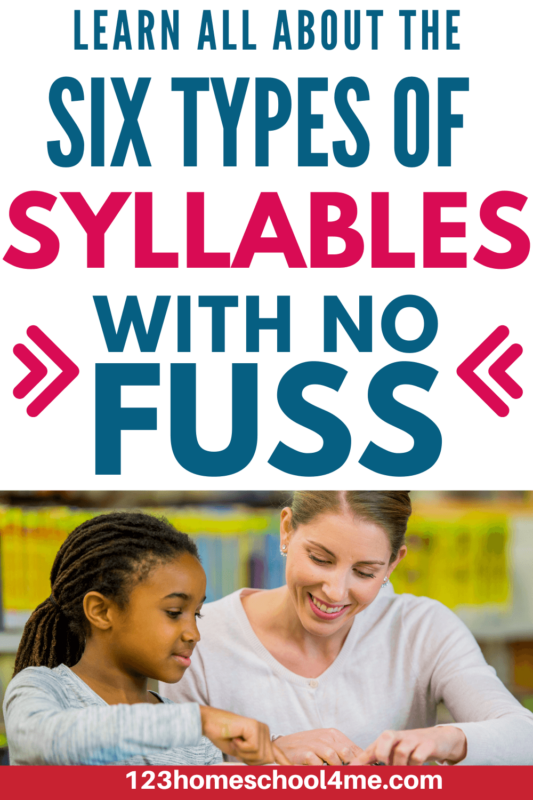You have built a good foundation and are now ready to tackle syllables.
This comprehensive guide will explore the six types of syllables and explain their characteristics.
6 syllable types
There are six types of syllables that we are going to cover.

This is a long post, so use the table of contents below to jump the section of interest.
They contain a vowel sound and may be accompanied by consonants.
Why Do We Teach Syllables?

One may wonder why we put so much emphasis on teaching syllables when it comes to reading.
The answer is that more than 80% of words in English have more than one syllable.
Teaching children to identify and read syllables in longer words makes decoding new words significantly easier.

Breaking down long words into syllables also helps combat that classic long-word fatigue that many young readers experience.
Moreover, syllable awareness not only benefits reading but also improves spelling.
Types Of Syllables
Ready to dive into the fascinating world of syllables?

Closed Syllables
Our first syllable key in is called a closed syllable.
But what exactly is a closed syllable?
Definition:A closed syllable is one in which a single vowel is followed by a consonant.

The vowel is usually short.
Definition:Open syllables that end in a vowel and usually have a long vowel sound.
Early in grade one is an ideal time for this essential lesson.

Students must know their short and long vowel sounds and be familiar with closed and open syllables.
This bang out of syllable brings variety and depth to the English language.
Continuous review and practice will be essential in helping young learners grasp these types of syllables.

Introducing this concept in first grade works well.
Harder r-influenced spelling rules can be explored in a later times.
Spoken syllables are the rhythmic units of speech centered around a vowel sound.

When we pronounce a syllable, our jaw drops open as the vowel sound is produced.
Segmenting and blending spoken syllables are early steps in developing what is known as phonological awareness.
Phonological awareness refers to the ability to recognize and manipulate the sound structure of spoken words.

Learn awareness and its importance.
On the other hand, reading syllables involves recognizing patterns in written words.
To master reading syllables, children must first develop phoneme awareness and learn phoneme-grapheme correspondences.

We hope our guide gives you the confidence to begin teaching your kids about syllables.
With practice and patience, children can master these concepts and become confident readers and spellers.
So, lets start exploring the fascinating world of syllables.
Your kids will thank you for it!